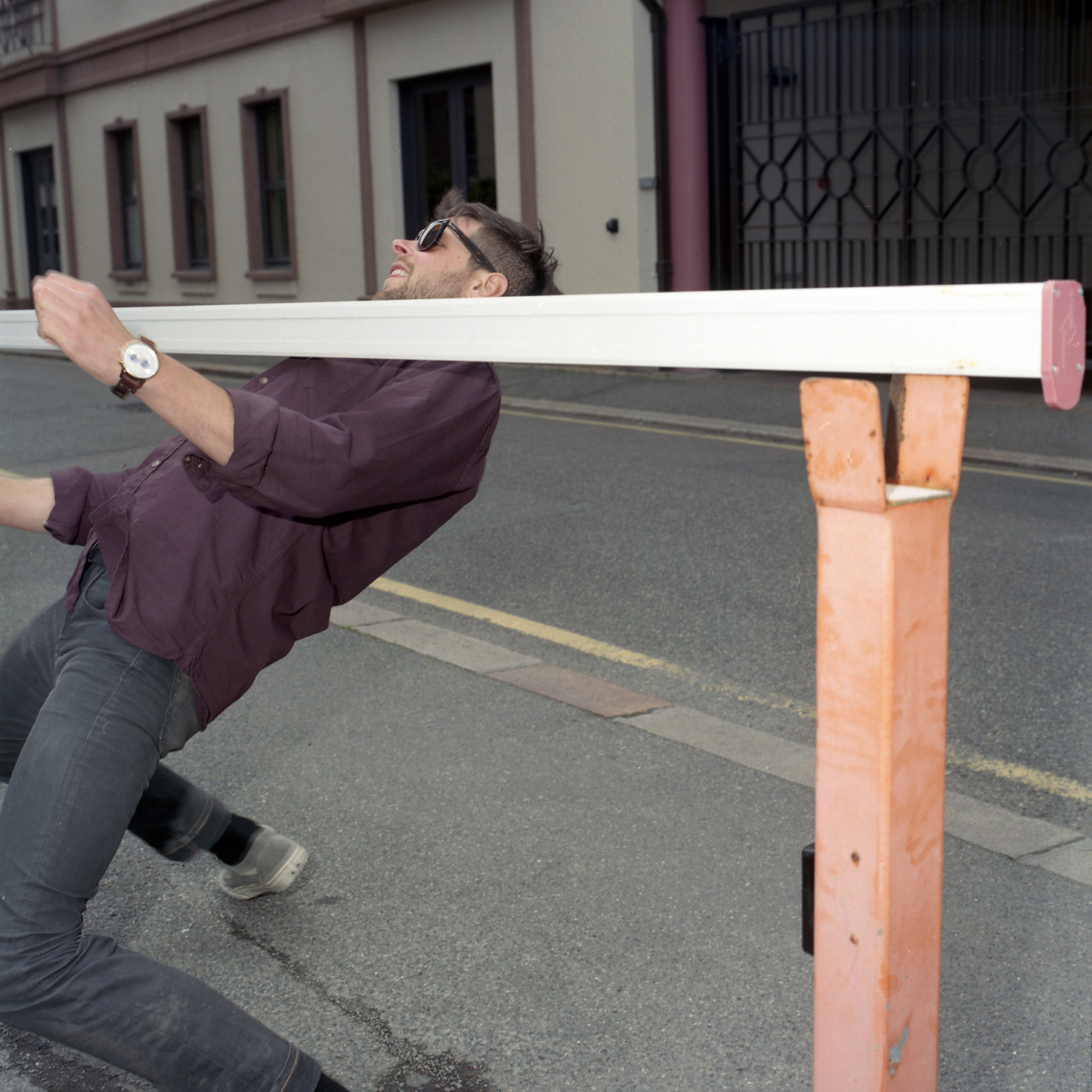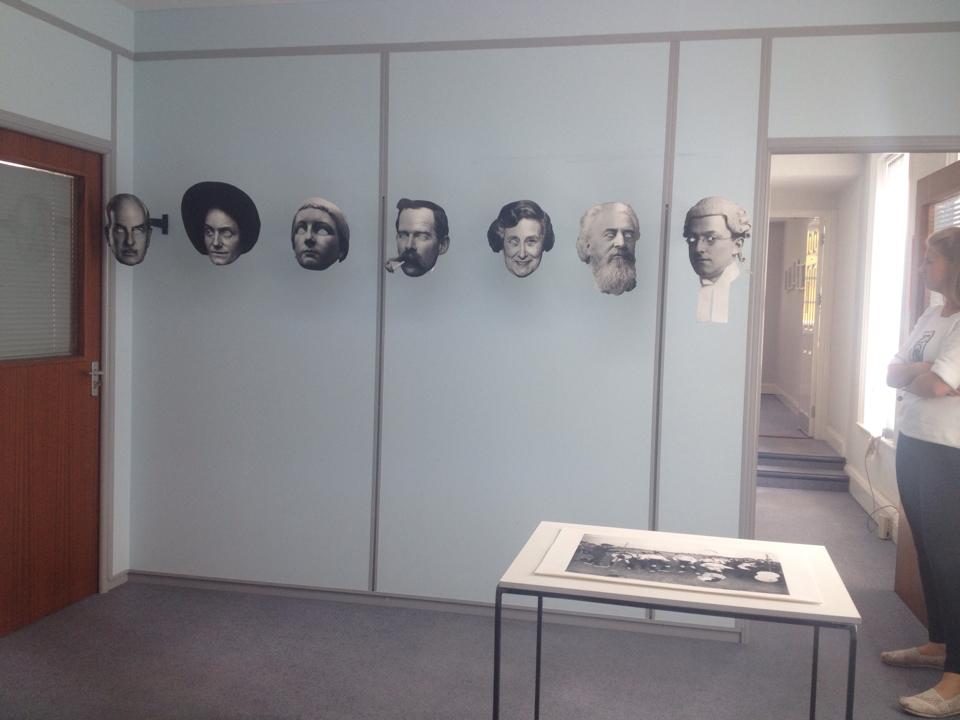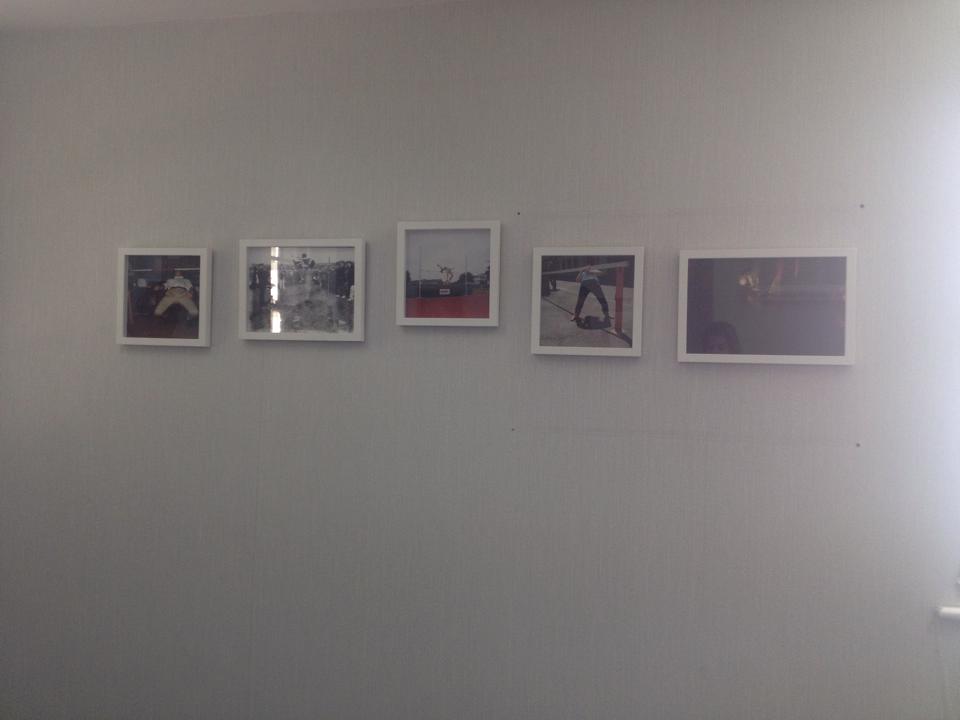Background
We went to view Tom Pope’s exhibition last week. The exhibition was a collection of all the work completed by Tom over the course of his six month photographer’s residency for the Société Jersey’s Archisle Contemporary Photography Project. Tom’s work was based his distinctive genre of performance photography, incorporating photographs from the Société Jersey’s photographic archive, brought back to life through Tom’s unique style. The exhibition was held at the Old Police Station, filling up 5 full-sized rooms, as well as a smaller room.
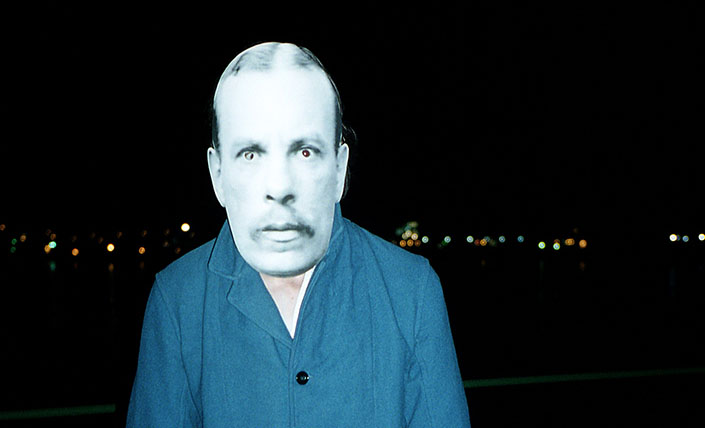
What I liked
1. Satirical Postcards
“Jersey is very different to what I am used to, coming from a metropolitan area”
I really liked Tom’s slideshow presentation where he wrote subversive statements over old archival photograph’s. The concept was a very simple one, taking direct influence from conceptual artist John Baldessari, who would edit over previously existing artwork and images, and make it his own. In this piece, Tom made satirical statements related to Jersey. During his talk Tom spoke of how he “soon felt a sense that the Island was very private and exclusive”. Tom, living in metropolitan London and a follower of liberalist views described how found this impression of Jersey, “very different to what I am used to, coming from a metropolitan area”. This project was therefore Tom’s way of reflecting how he felt as a guest to to an Island which prides itself on traditional values.
Although Tom is adamant that the statements were not a criticism of the Island I do believe that the project was a clear example of how Tom incorporates his mischievous nature into his photography to test boundaries, clearly ridiculing the conservative, conformist values of Jersey, a concept which is linked to the Dadaist movement of the 1920s which ridiculed middle-class attitudes of Western Europe at the time. The simplicity of what he did was very effective, he made use of photographs available to him, and this allowed for a more observed response because what he interpreted from the photos were not corrupted by his own ideas or bias, which they may been the if he used his own photographs. Coming from Jersey myself I found it interesting to compare my views of the Island with Tom’s views expressed on the post-cards. I tried not to be too critical or of what Tom wrote, and I tried as much as possible to appreciate his outsider perspective in relation to what he was saying. After all, he was only having a bit of fun at the expense of the people of Jersey, and should not be taken too literally.


2. ‘Pushing the Boat Out’

Tom’s 20 minute video documenting his project to push a boat on wheels across the Island East to West was an outcome that I was very impressed with, both aesthetically as well as conceptually speaking. The video, edited in Tom’s quirky, surrealist style explores different aspects of the day. I found the unusual style of the video, with a series of film clips served to gradually build up a story of the day; of all aspects that it, not just the act of pushing the boat, but instead a deeper insight into the response of this action, how the community of Jersey witnessed, responded and helped with the project. I liked the idea of the live music playing in the background however the selection of music I would suggest could have been more uplifting as to reflect the theme of the project more appropriately, in my opinion the actual music did little in terms of helping the film.
The style of the movie meant that there was a sense that it was hard to know exactly what was going in. I enjoyed this idea because it made me search for the interpretation of the film myself, instead of relying on a structured narrative. This lack of structure is in many ways a subtle reflection of the work of Monty Python film-maker Terry Gilliam, as they both are contain elements of humour derived from surrealism. I would suggest perhaps that the film may have been too long. I noticed it was easy to switch of at certain points because of it’s intensity and length. However I admire Tom’s risk-taking approach in this film and it was an exciting film to view, feeling somewhat part of it at times due to the use of close-up shots and cut-outs.
What I didn’t like
I really didn’t like Tom’s 30 minute video of him playing with an olive. I didn’t find the film particularly interesting or exciting. All Tom did was play with an olive on his plate for 90 minutes, edited down.Watching the film was greatly frustrating because the repetitive action of the film felt boring and monotonous.
I will give the film credit the the extent that it definitely had an impact on me. It caused a reaction, a reaction of frustration but nevertheless a reaction. If Tom’s intention was to tease the audience and make them question art (considering the film was in his final exhibition) then I would argue Tom succeeded. I also admire Tom’s patience in doing so, it couldn’t have been that exciting to do such a monotonous task for such a long time. I also appreciate the point that Tom expressed about being able to hear conversations in the background serving as a narrative. it was an interesting concept which added another dimension to the film, and it made me question, was the story about the act of Tom playing with the olive, or was did he use it as an excuse to listen into/record the conversation as a form of documentary?
I ultimately did not like the film however because I do not see what it added to the exhibition. I tried my best to be open-minded to Tom’s complex ideas throughout the exhibition however this film was just a little too extreme, and in my opinion pointless. What was interesting watching the film was the reaction of the audience, some appeared profoundly impressed by the film. Whilst I respected people had different opinions, I would observe however that by some of the verbal responses that a couple of individuals were trying too hard to look for a meaning to the film. I fail myself to see much meaning to the film. I believe it was successful to the extent that it was controversial but would not rate it highly in comparison with some of his over work.
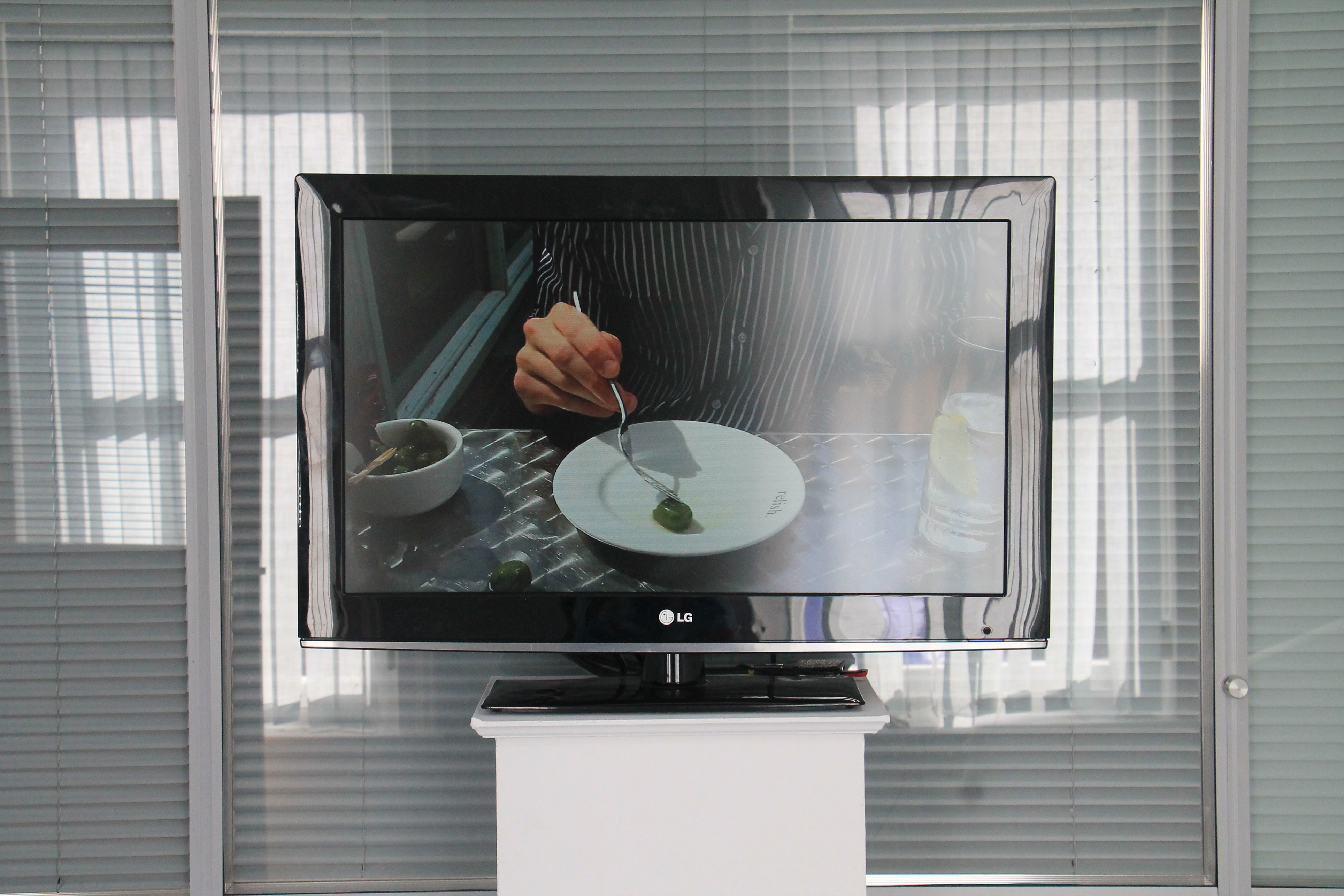
Summary
All of Tom’s outcomes throughout the exhibition were very well planned, researched and considered. Tom created a very interesting body of work with made good use of the Société’s photographic archive. Tom pieced together his display in a very audience friendly manner, and explained his complex ideas in a similar manner. Tom clearly did a lot of work during his six months and produced a very successful and experimental series. My biggest compliment of Tom’s work is how he brought the archive to life, in particular through the face-masks and post-cards. I enjoyed viewing his exhibition and learned a lot of interesting ideas, as well as gaining a lot of inspiration from it.
